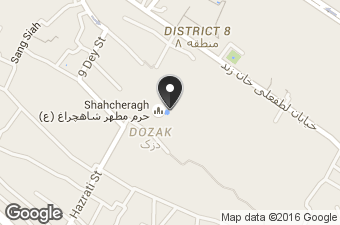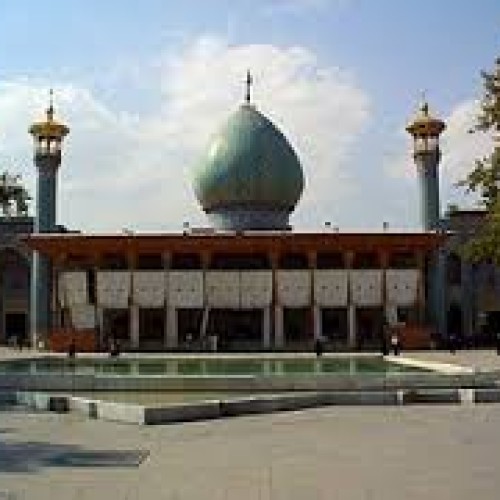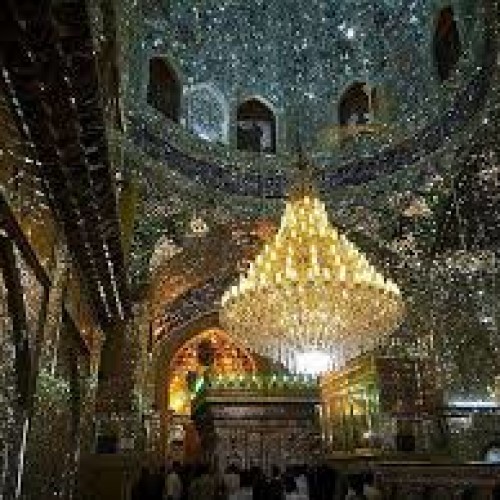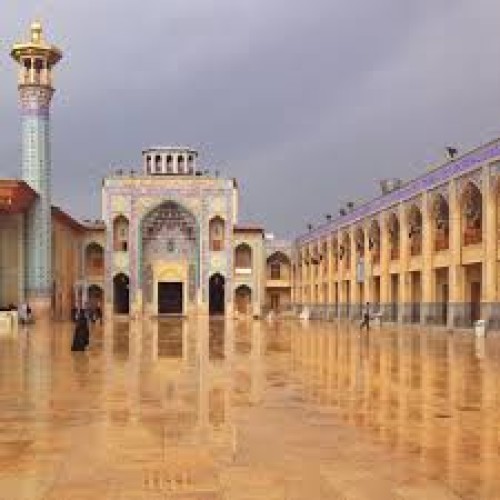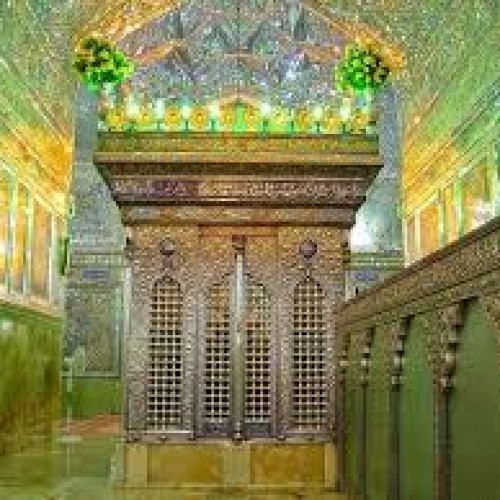Know more about the shrine of the shrine
Shah Cheragh is a tomb in Shiraz, which, according to the Shiite beliefs, was buried in Ahmed b. Musa Kazem, the eldest son of Imam Musa Kazem and Muhammad ibn Musa, Imam Reza’s brothers. He traveled to Khorasan on the way to joining his brother, but was killed in the way by the people of Ma’mun the Caliph Abbasi in Shiraz.
This tomb is located next to a field called Ahmadi in the city of Shiraz. Tomb of Seyedmirr Mohammad is the brother of Sayedmir Alamdad near Shah Cheragh.
Day of the Shah Cheragh
In 2007, the General Culture Council of the Fars province was named one day in honor of Shah Cheragh, and the custodians decided to choose the birthday of the Prophet as a commemoration ceremony. So, to determine the exact day of birth, historians and researchers began their research, but after investigations, the experts concluded that the birthday of the Shah Charagh is not well known, and there are different citations in this regard. Therefore, it was decided that in the decade of honor, that is, between the birth of Hazrat Masoumeh and Imam Reza, one day will be designated as the day of the commemoration of Hazrat Ahmad ibn Musa “Shah Cheragh”.
The Supreme Council of the Cultural Revolution, on September 24, 2009, approved the sixth day of the year, the fifth day of the decade of dignity, in the name of the day of the commemoration of Ahmad bin Musa Shahkhraq in order to register in the calendar of national-Islamic events of the country.
Tomb of Sayyid Mir Ahmad, the brother of Imam Reza (PBUH), the eighth Shiite Imam, is located in Shiraz, in a place known as the famous Cedar area. This neighborhood is now connected to the neighborhood of the Chicken Market and the neighborhood of the Garden Gardens and the Black Stone District and the southern fence of the city and the water lagoon. Hazrat Ahmad (AS) has enjoyed a special status with his father, Imam Musa Kazem (AS).
It has been written that Hazrat Ahmad, a man of Karim, Jalil al-Qadar, was magnanimous and righteous. Imam Musa Kazem (AS), because of his interest in Hazrat Ahmad (AS), presented him with a property called Yasiriyah, a property which later was sold by Hazrat Ahmad (AS) and by which he liberated a thousand captives. .
The proposal of the Shiites for the Imamate of the Prophet Ahmad After Imam Musa Kazem (as), the credibility and position of Ahmad (AS) among the children of Imam Musa (AS) was to a degree that, after the martyrdom of Imam Musa Kazem (as), a group of people to support Imamate Ahmad (AS) rose and created a sect called Imamieh.
According to the commandment, his soldiers attacked the holy shrine of Ahmad bin Musa (AS). The Prophet courageously defied the soldiers. The enemies who did not return from him returned to his secret hiding wall and penetrated into his house, and broke up his prophet from behind with his sword, and then he destroyed the house on his holy body, the incident in Date of 17th Rajab happened.
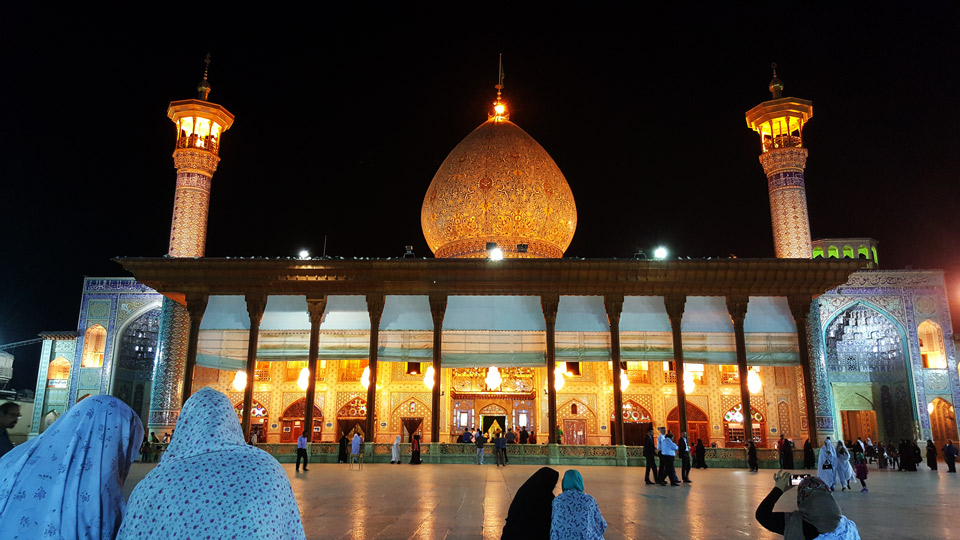
Building Architectural Specifications
The interior of the shrine is decorated with colorful mirrors, artistic style, mirror and a variety of beautiful Persian and Arabic lines, decorating the view around the mirrors and tiles.
The shrine structure consists of a front porch and a widespread shrine behind the porch, located on the four sides of the shrine, four royal palaces and a mosque on the back of the shrine (west side). It is located in the kingdom under the dome and is made of silver.
The courtyard of the king has two lights in the main entrance, which is on the south and north side of the shrine, underneath the two large, tiled past and into the vast courtyard of the shrine. Inside the courtyard, a large pond of the fountain has been built and planted around the pond. The Shah Charagh Shrine on the west side of the courtyard and the shrine of Seyyed Mir Mohammad, the brother of Shah Cheragh, is located on the north side of the courtyard.
Apart from the two in the main, there are two on the other side, one that goes to the Hajji market and the other to the mosque Atiq. A porch also leads from the north side of the courtyard to the king’s lights. Around the courtyard, two-story rooms In the forehead and foreheads they are tiled. The ferrous iron columns of the shrine are covered with exquisite wood and the carved wood has been used on the flat roof. A wide range of facilities, such as the police station, post office and telecommunications, library and museum, have been created in this vast courtyard for the welfare of the people.
The history of the king
In the year 745 (AH.) Mother of King Sheikh Abu Ishaq Injo king of Persia, Queen Tashi Khatun good work he did on the court. He also built a vast school near the tomb. He also lots of shops and property market Meymand Gulf near the shrine dedicated to the saint’s shrine.
Moroccan traveler Ibn Battuta who in the year 748 (AH.) For the second time visited Shiraz, in his travelogue about Queen Tashi Khatun and described the tomb, he wrote:
Tashi Khatun, mother of King Abu Ishaq, near the Tomb of the Great School and the position has made in it to feed passengers to pay and the number of readers joined the Torbat-e-Quran reading the night of Monday, Khatun, to visit the tomb. And in the evening the judges and The jurists and Sadat of Shiraz are also present.
This crowd is in the tomb of the Republic and they are busy with the song of the readers of the Qur’an. Food and fruits are given to the people and after the meal, the preacher, goes above the pulpit, and all these things are done between the evening and evening prayers. The tent will sit on a grill pavilion overlooking the mosque. At the end (in honor of this monument), like the kings of the drum and trumpet and beeps.
In 912 (AH), according to the order of Shah Isma’il Safavi, extensive rehabilitation was carried out on the tomb. 85 years later, as a result of the earthquake of 997 BC, half of the dome of the tomb was destroyed, which was rebuilt in the following years.
Shah Cheragh, Tomb of Shah Cheragh, Tomb of Ahmad ibn Musa Kazem
In 1142 AD, Nadir Shah Afshar carried out a massive rehabilitation of this tomb, and, on his orders, hung a great gable under the roof and the dome. Nader Shah, before taking Shiraz and overcoming the Afghans, had a treaty that if he succeeded in the war, he would do a decent rebuilding of the tomb. So after defeating the Afghans and mastering Shiraz, he spent 1,500 dollars worth of that time on improving the king’s lights, and his qandil weighed 720 meqals, made of pure gold and silver chains. It was still hung by 1239 (AH).
In the earthquake of 1239 (AH), Shiraz became dirty and the tomb was completely ruined, the writer Tazkera Delgosha, who himself saw the earthquake, writes:
The dome of the tomb (the King of the Lights), rising from the height of the height, the sun of the universe, shone every day in its half day, so much so that the earth was split and fell into the depths of the earth … and those great buildings … You seem to have always been ruined …
fter the earthquake, Qandil sold the donation of Nadir Shah and spent the restoration of the tomb.
In 1243 (AH), under the command of Fathali Shah Qajar, Hossein Ali Miraz Farmanfarma, it was sought to make the floor of the mosque taller one meter above the surface of the earth. This work took place, and instead of using rock and rubble, they built it of stone, brick, and plaster, and finally mounted a gravel monochrome. In 1269 (AD), the dome of the tomb broke down due to an earthquake. In the same year, Mohammad Nasser Zahir al-Dawlah renovated it.
In 1289, Mas’ud Mirza set up a silver dwarf on the entrance of the shrine, and in 1292, the prince Zulf al-Saltan installed a large alarm clock on the south wall of the tomb. In the year 1306 (e. A) A work mirror was done on the walls inside the shrine.
In the solar year 1336, the oldest dome of the tomb was dismantled and the first dome with the logos was made by the National Association of the Arts and the Archaeological Bureau of Fars by the late Artist Sayyid Ahmad Rezazadeh.
Shāh Chérāgh (Persian: شاه چراغ) is a funerary monument and mosque in Shiraz, Iran, housing the tomb of the brothers Ahmad and Muhammad, sons of Mūsā al-Kādhim and brothers of ‘Alī ar-Ridhā. The two took refuge in the city during the Abbasid persecution of Shia Muslims.
The tombs became celebrated pilgrimage centres in the 14th century when Queen Tashi Khatun erected a mosque and theological school in the vicinity.
Shāh-é-Chérāgh is Persian for “King of the Light”. The site was given this name due to the nature of the discovery of the site by Ayatullah Dastghā’ib (the great grandfather of the contemporary Ayatullah Dastghā’ib). He used to see light from a distance and decided to investigate the source. He found that the light was being emitted by a grave within a graveyard. The grave that emitted the light was excavated, and a body wearing an armor was discovered. The body was wearing a ring saying al-‘Izzatu Lillāh, Ahmad bin Mūsā, meaning “The Pride belongs to God, Ahmad son of Musa”. Thus it became known that this was the burial site of the sons of Mūsā al-Kādhim.
